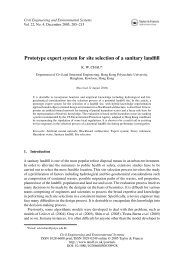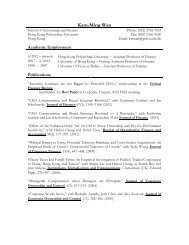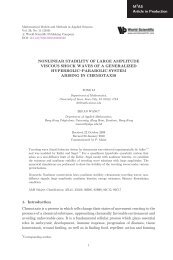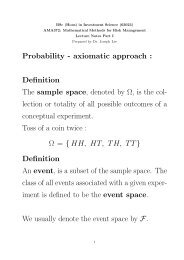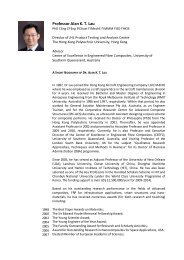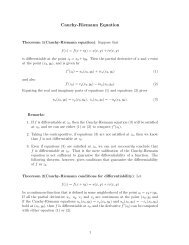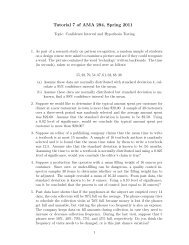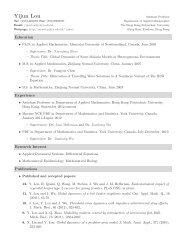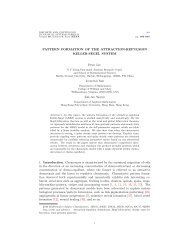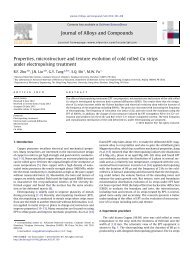DETERMINANTS AND EIGENVALUES 1. Introduction Gauss ...
DETERMINANTS AND EIGENVALUES 1. Introduction Gauss ...
DETERMINANTS AND EIGENVALUES 1. Introduction Gauss ...
You also want an ePaper? Increase the reach of your titles
YUMPU automatically turns print PDFs into web optimized ePapers that Google loves.
106 II. <strong>DETERMINANTS</strong> <strong>AND</strong> <strong>EIGENVALUES</strong>ThenExample <strong>1.</strong> LetHence,A = t[ ]0 <strong>1.</strong>−1 0[ ]A 2 = t 2 −1 00 −1[ ]A 3 = t 3 0 −11 0[ ]A 4 = t 4 1 00 1[ ]A 5 = t 5 0 1−1 0.[ ] [ ]e A 1 0 0 1= +t + 1 [ ]−1 00 1 −1 0 2 t2 + 1 [ ]0 −10 −1 3! t3 +...1 0[ 1−t 2=2 + t4t34!− ... t−3! + t55! − ... ]−t+ t33! − t55! + ... 1− t2 2 + t4[ ]4! − ...cos t sin t=.− sin t cos tAs in the example, a series of n × n matrices yields a separate series for eachof the n 2 possible entries. We shall say that such a series of matrices converges ifthe series it yields for each entry converges. With this rule, it is possible to showthat the series defining e A converges for any n × n matrix A, but the proof is abit involved. Fortunately, it is often the case that we can avoid worrying aboutconvergence by appropriate trickery. In what follows we shall generally ignore suchmatters and act as if the series were finite sums.The exponential function for matrices obeys the usual rules you expect an exponentialfunction to have, but sometimes you have to be careful.(1) If 0 denotes the n × n zero matrix, then e 0 = I.(2) The law of exponents holds if the matrices commute, i.e., if B and C aren × n matrices such that BC = CB, then e B+C = e B e C .(3) If A is an n × n constant matrix, then d dt eAt = Ae At = e At A. (It is worthwriting this in both orders because products of matrices don’t automaticallycommute.)Here are the proofs of these facts.(1) e 0 = I +0+ 1 2 02 +···=I.



